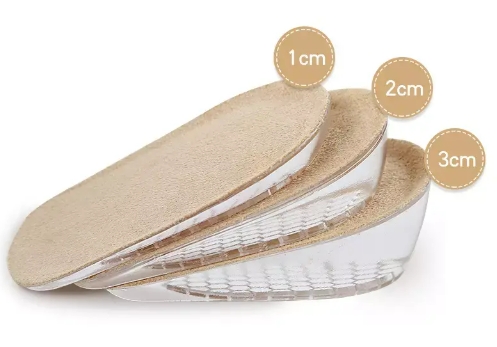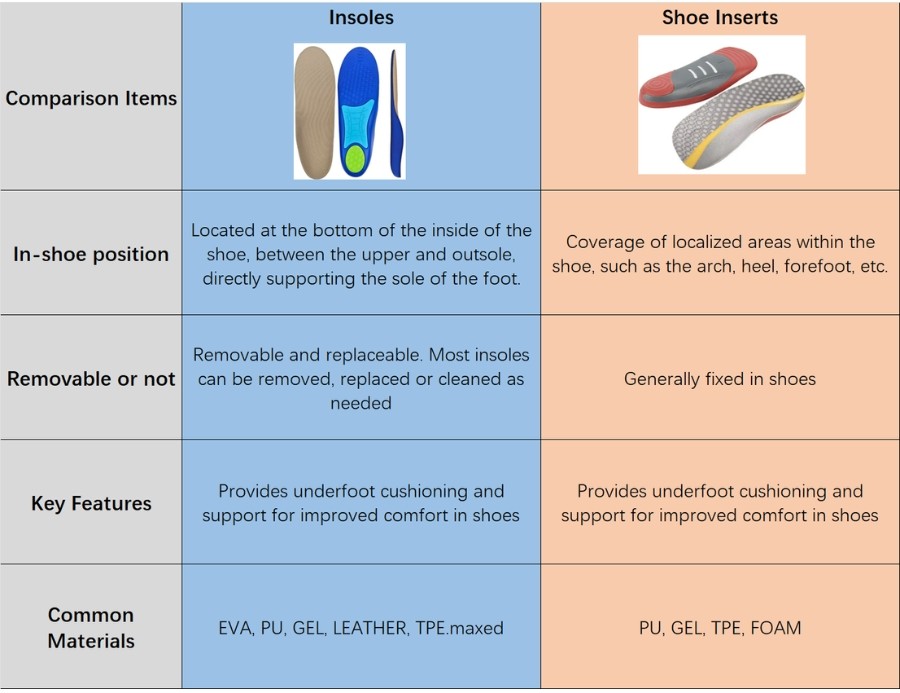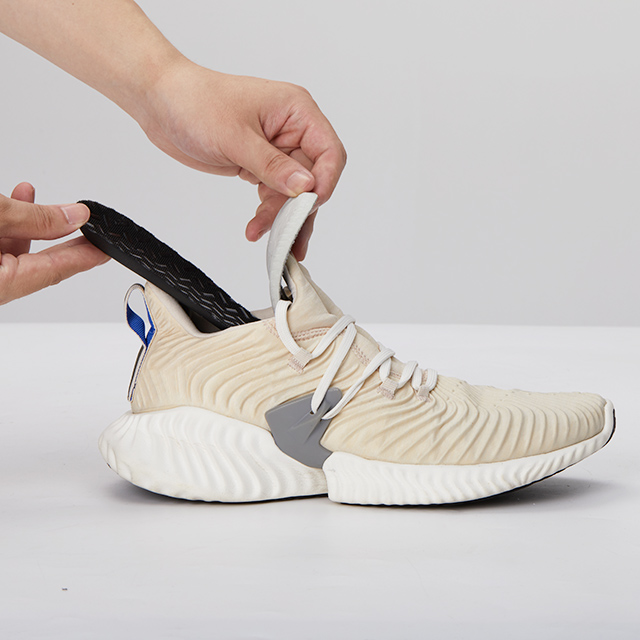Definition, Main Functions and Types of Insoles
The feature of these insoles is that they can usually be moderately cut to fit your feet

The insole is the inner layer of the shoe, located between the upper and sole, and is used to provide comfort and cushioning of the foot. The insole is in direct contact with the sole of the foot, keeping the shoe clean and covering the uneven insole, thereby improving the feeling of the foot. High quality insoles usually have good moisture absorption and moisture removal properties to keep the shoe dry. Of course, during the improvement of footwear functionality, different insoles can also provide special functions such as orthopedic feet, shock absorption and antibacterial deodorization.
Definition, Main Functions and Types of Shoe Inserts
Common types of insoles include
The main difference between insoles and shoe inserts
While both insoles and shoe inserts provide daily foot comfort, there are significant differences in terms of where they are used in the shoe, their purpose and their interchangeability. The table below summarizes the differences between insoles and shoe inserts

A shoe inserts is a layer of lining material inside a shoe that is used to wrap around the skin of the foot and enhance comfort inside the shoe. Distinguished from insoles, shoe inserts can be just forefoot pads, arch pads, heel pads, or 3/4 insoles. They are designed to address 1 or 2 specific foot problems, such as arch pain, heel spurs, plantar fasciitis, or forefoot pain.
Common types of shoe inserts include:
How to choose the right product according to use

Depending on different usage scenarios and foot needs, you should choose the appropriate type of insole or pay attention to the characteristics of the shoe lining to get the best comfort and functional results:
Daily commuting/casual: Comfort and breathability are the primary considerations. It is recommended to choose shoes with soft cushioning insoles, the material can be memory foam or PU foam, etc., which can provide all-day comfort and support. For shoe inserts, breathable fabric lining is a good choice, they are comfortable to touch and can wick away sweat and moisture to ensure that your feet remain dry after a long walk. Breathable insoles and shoe insert are especially important for summer or sweaty people, with preference given to insoles with moisture-wicking and antibacterial properties.

Sports workout/running: Focus on support and shock absorption to enhance performance and comfort. Running, ball games and other sports require insoles with good cushioning and shock-absorbing performance to reduce the impact borne by the feet and joints. Specialized sports insoles or shock-absorbing insoles should be chosen, preferably with soft types of arch support design to maintain foot stability and prevent plantar cervical meningitis pain.
At the same time, the mesh lining and breathable upper on the surface of the insole can help dissipate heat and sweat quickly during strenuous exercise to avoid sweltering feet.
Special Needs for Foot Health: For problems such as flat feet, high arches, and plantar pain, orthotic insoles or medical insoles are needed to meet the needs of foot support. For example, people with collapsed arches (flat feet) should choose insoles with arch cushions for support, while those with high arches should choose insoles that fill in the arch gaps and reduce pressure on the forefoot and heel. If you have pain issues such as plantar fasciitis, consider shock-absorbing or customized orthotic insoles to relieve pressure.
Of course, we also need to consider the amount of space in the shoe for different shoe types. After all, arch support insoles still need to occupy a certain amount of space in the shoe. If the space inside the shoe is small, we also recommend using a 3/4 shoe insert to solve the foot problem and ensure the comfort of the feet while wearing the shoe.

Overall, insoles and shoe inserts have their own roles to play: insoles focus on full-foot support, cushioning and functional adjustments, while shoe inserts focus on solving individual shoe or foot problems. Consumers should pay attention to the details of insoles and shoe inserts according to their own usage scenarios and foot conditions, so as to choose footwear products that are both comfortable and fulfill their needs.
Of course, in B2B trade, as a professional foot care and shoe care factory with over 20 years of experience, we have a comprehensive product information base to help our customers find products that meet their market needs.
Post time: Mar-14-2025













